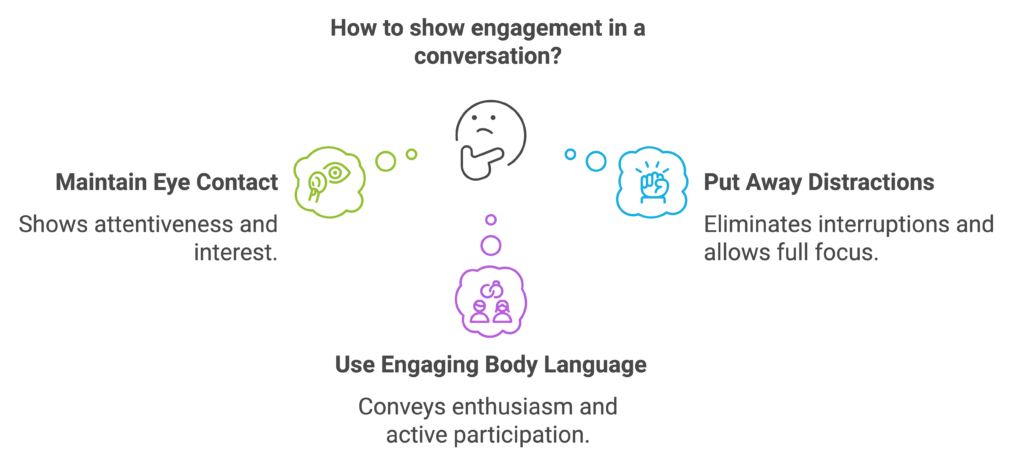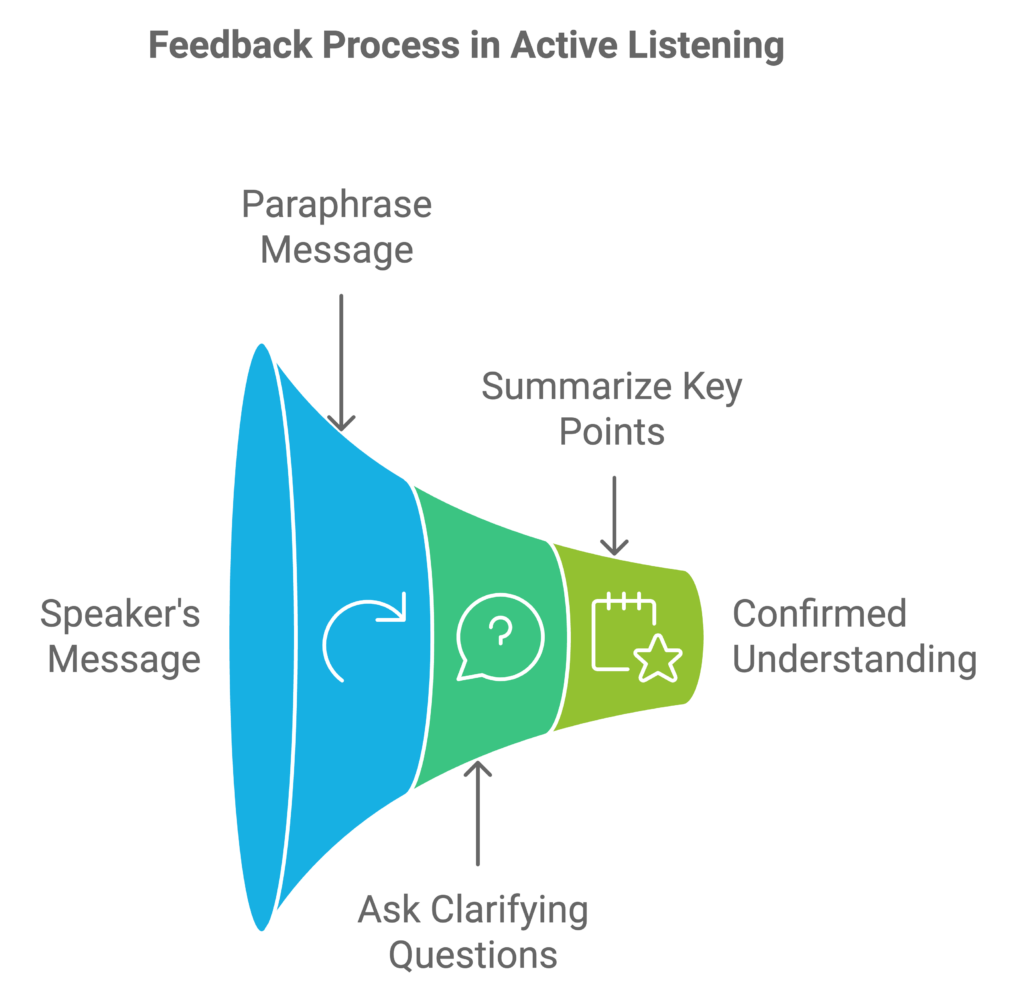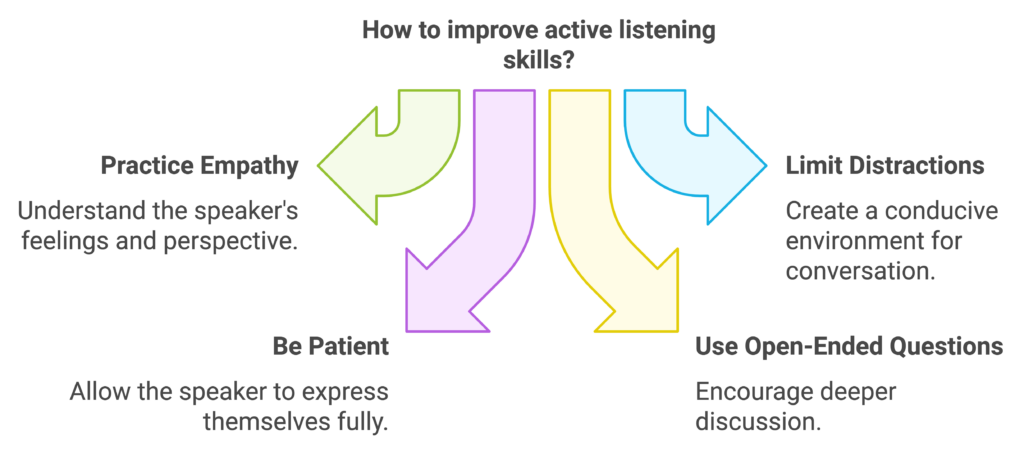Communication is the bedrock of any strong relationship. Nonverbal communication, including posture and touch, plays a crucial role in shaping interpersonal relationships by conveying emotions and attitudes. Whether you’re just starting out or have been together for years, honing your communication skills can lead to deeper understanding, fewer conflicts, and a more satisfying partnership. Here are seven effective ways to enhance your relationship communication:
Understanding the Importance of Communication in Relationships
Effective communication is the foundation of any successful relationship. It involves sharing thoughts, feelings, and needs with your partner, as well as understanding and responding to their nonverbal cues. In this section, we will explore the importance of communication in relationships and provide tips on how to improve your nonverbal communication skills.
The Power of Communication in Relationships
Communication is the key to a healthy and successful relationship. It allows couples to understand and respect each other’s needs and boundaries, resolve conflicts constructively, and build trust and intimacy. When you communicate effectively, you create a safe space where both partners feel valued and heard. This mutual understanding can prevent misunderstandings and foster a deeper connection.
To improve your communication skills, start by being open and honest with your partner. Share your thoughts and feelings without fear of judgment. Practice active listening techniques, such as maintaining eye contact and using verbal affirmations, to show that you are fully engaged in the conversation. Remember, communication is a two-way street, and both partners need to be willing to listen and share.
1. Practice Active Listening
Active listening is the cornerstone of effective communication in any relationship. It’s not just about hearing the words your partner says; it’s about fully engaging with their message and showing that you value their thoughts and feelings. When done right, active listening can deepen your connection, prevent misunderstandings, and make your partner feel truly heard and appreciated.
What is Active Listening?
Active listening involves giving your full attention to your partner, processing what they’re saying, and responding in a way that shows you’ve understood. It’s a skill that requires practice and intention, but the rewards in your relationship can be profound.

Key Components of Active Listening
-
Give Your Undivided Attention:
-
Put away distractions like phones, tablets, or TV remotes.
-
Face your partner and maintain appropriate eye contact.
-
Use your body language to show you’re engaged (nod, lean in slightly).
-
Show You’re Listening:
-
Use verbal affirmations like “I see,” “Mm-hmm,” or “Go on.”
-
Reflect your partner’s emotions in your facial expressions.
-
Provide Feedback:
-
Use the active listening technique, which includes reflecting and validating the speaker’s emotions and key points. Paraphrase what you’ve heard to ensure understanding. “So what you’re saying is…”
-
Ask clarifying questions if something isn’t clear.
-
Defer Judgment:
-
Listen to understand, not to formulate your rebuttal.
-
Avoid interrupting or finishing your partner’s sentences.
-
Respond Appropriately:
-
Offer your thoughts and feelings after your partner has finished speaking.
-
Validate their feelings, even if you disagree with their perspective.

The Power of the Pause
One often overlooked aspect of active listening is the power of the pause. After your partner finishes speaking, take a moment before responding. This pause serves several purposes:
– It ensures your partner has finished their thought.
– It gives you time to process what was said.
– It shows you’re thoughtfully considering their words.
– It can prevent reactive or emotional responses.
Overcoming Common Barriers to Active Listening
-
Distractions: Create a dedicated space and time for important conversations.
-
Emotional Triggers: If you feel yourself becoming defensive, take a deep breath and refocus on understanding your partner’s perspective, seeing things from another person’s perspective.
-
Assumption Making: Catch yourself if you’re jumping to conclusions and ask for clarification instead.
-
Problem-Solving Mode: Sometimes, your partner may just want to be heard, not to receive solutions. Ask if they want advice before offering it.
A Personal Anecdote on Active Listening
Here’s a personal example of how active listening can make a difference:
I have a rule with my friends – no phones at mealtimes. When we share a meal, I always put my phone on vibrate and tuck it away, and I ask them to do the same. This small discipline creates a space where we can focus entirely on each other and the pleasure of sharing a meal together. It’s a simple yet powerful way to show that I value our time and conversation.
This practice has transformed our interactions. We have deeper conversations, share more laughs, and leave feeling more connected. It’s amazing how much more you can hear when you’re truly listening.
Practice Exercise: The Listening Game
Try this exercise with your partner to improve your active listening skills:
1. Set a timer for 3 minutes.
2. One person speaks on any topic they choose.
3. The other person listens without interrupting.
4. When the time is up, the listener summarizes what they heard.
5. The speaker provides feedback on how well they felt heard.
6. Switch roles and repeat.
This game can be eye-opening, showing both how much we miss when we’re not actively listening and how valued we feel when someone truly listens to us.
Remember, active listening is a skill that improves with practice. By consistently applying these techniques in your daily interactions, you’ll not only improve your communication but also deepen your connection with your partner.
[Subsequent sections continue as before]
2. Use “I” Statements
When discussing sensitive topics or expressing frustrations, frame your thoughts using “I” statements:
– Instead of: “You never help around the house!”
– Try: “I feel overwhelmed when I have to handle all the housework alone.”
This approach reduces defensiveness and opens the door for productive dialogue.
3. Set Aside Dedicated Talk Time
In our busy lives, meaningful conversations can easily fall by the wayside. But who says “talk time” has to be a formal, sit-down affair? Let’s get creative and sneak some quality communication into your daily life!
Turning Errands into Adventures
Why let grocery shopping or laundry be a solo bore? Invite your partner or friend along and turn these mundane tasks into opportunities for connection. As you debate between almond milk or oat milk, you might just find yourselves discussing your dreams for the future!
Try this: Next time you’re heading out for errands, text your partner: “Want to join me on a thrilling expedition to the land of fresh produce and laundry detergent? I hear the conversation there is riveting this time of year!”
Sunday Drive Dialogues
Channel your inner 1950s family and go for a Sunday drive! There’s something about being in a car together that sparks conversation. Maybe it’s the lack of eye contact that makes deeper topics feel less intimidating, or perhaps it’s the changing scenery that inspires new thoughts.
Suggest it like this: “Fancy a romantic date with me, two cups of coffee, and the open road? I promise terrible singing and potentially life-changing conversations!”
Walk and Talk
Take a page from “The West Wing” and have your important discussions on the move. A stroll around the neighborhood or a hike in nature can get both your body and mind active, leading to more dynamic conversations.
Invite your partner with: “Care to join me in solving all of life’s problems while we get our steps in? Warning: May result in profound revelations and minor shin splints.”
Conversation Starters to Get the Ball Rolling
Sometimes, the hardest part is just getting started. Here are some fun openers to kick off your talks:
1. “If you could have dinner with any three people, dead or alive, who would they be and why?”
2. “What’s the most embarrassing thing you did as a kid that you can laugh about now?”
3. “If we won the lottery tomorrow, what’s the first thing we’d do?”
4. “What’s a small change we could make in our daily routine that might bring us more joy?”
5. “If our life together was a movie, what genre would it be, and who would play us?”

Scheduled Check-ins with a Twist
While spontaneous talks are great, having some scheduled check-ins can ensure you’re staying connected regularly. But let’s make them fun!
– Taco Tuesday Talks: Combine your weekly chat with everyone’s favorite food. Nothing says “open communication” like a mouthful of guacamole!
– Friday Night Highs and Lows: End the week by sharing your highest and lowest moments. Bonus points if you do this while building a blanket fort.
– Monthly Midnight Musings: Stay up late once a month for a deep, potentially sleep-deprived chat. You’d be surprised what insights emerge at 2 AM!
Remember, the key to great communication is creating an atmosphere where you both feel comfortable and engaged. Whether you’re discussing your deepest fears while folding socks or planning your future over a shared pizza, the important thing is that you’re connecting.
So, grab your partner, pick a fun setting, and dive into those conversations. Your relationship (and your laundry pile) will thank you!
Making Serious Talks Playful: The ‘Board Meeting’ Approach
Sometimes, certain topics like finances can feel uncomfortable to discuss. Here’s a personal story that might inspire you:
I once had a partner who was very uncomfortable talking about money. To make these discussions less daunting, we came up with a creative solution. We would send each other formal memos to request a ‘board meeting.’ On the designated day, we’d dress up in business attire and conduct our discussion as if we were in a corporate boardroom.
This playful approach allowed us to step outside our usual couple dynamic and address serious issues in a less emotionally charged way. We could work through our concerns objectively, and then return to our normal, affectionate interactions afterwards.
Why Role-Play Works for Serious Talks
1. Emotional Distance: Role-playing creates a psychological distance that can make it easier to discuss sensitive topics without feeling personally attacked.
2. Reduced Tension: The element of play helps to lighten the mood, making serious conversations feel less daunting.
3. New Perspectives: Stepping into a different role can help you see the issue from a new angle, potentially leading to fresh solutions.
4. Shared Experience: Creating a scenario together can be a bonding experience, reinforcing your teamwork even as you tackle challenges.

More Role-Play Ideas for Different Discussions
– The Talk Show: For general catch-ups or addressing multiple topics, pretend you’re on a talk show. Take turns being the host and guest.
– The Court Case: For decision-making or resolving conflicts, set up a mock trial where you each present your case and then act as joint judges.
– The Time Travelers: When discussing future plans or past issues, imagine you’re time travelers visiting from the past or future.
– The Alien Encounter: For explaining feelings or needs, pretend one of you is an alien trying to understand human emotions and relationships.
Tips for Successful Communication Role-Play
1. Set the Scene: Create a specific time and place for your role-play discussions. This helps mentally prepare both partners.
2. Stay in Character: Try to maintain your roles throughout the discussion. It can help keep the atmosphere light even when addressing serious topics.
3. Use Props: Simple props like a gavel for the court case or a microphone for the talk show can enhance the experience and serve as tangible reminders of your unique approach.
4. Establish Ground Rules: Agree on basic rules beforehand, like no interrupting or a safe word to pause the role-play if needed.
5. End with Reflection: After the role-play, take time to discuss how it went and what you both learned. This helps integrate the insights into your real-life relationship.
6. Have Fun with It: Remember, the goal is to make communication easier and more enjoyable. Don’t be afraid to be silly or over-the-top with your roles!
Enhancing Your Role-Play with Romantic Adventures Products
Why not add an extra layer of fun to your communication role-play with some of our products? Here are a few suggestions:
1. For the “Board Meeting” scenario, try a different colored wig or a sharp suit and tie to set the scene.
2. Spice up the “Interview with an Alien” with our adorable Alien Pipe Mug. It provides many ways to relax.
3. For “The Court Case,” we consider a pair of fuzzy handcuffs for the Bailiff.
4. “The Time Travelers” scenario pairs perfectly with our retro-inspired “Blast from the Past” lingerie collection. A pair of maribou slippers and a sexy robe place you squarely in the 50’s or you could get a corset if you wanted to go further back in time. Sexy women have always been in style.
Remember, the key to great communication is feeling comfortable and connected with your partner. These playful approaches and products can help create an atmosphere of fun and openness, making it easier to discuss even the most serious topics.
Creating Distraction-Free Zones
Building on the idea of dedicated talk time, consider creating “distraction-free zones” in your relationship. These are times and spaces where you both commit to being fully present with each other:
-
Tech-free dinners: Extend the “no phones at mealtimes” rule to your home life
-
Device-free bedrooms: Keep televisions and phones out of the bedroom to encourage intimacy and conversation before sleep
-
Unplugged date nights: Choose activities that don’t involve screens, like taking a walk, cooking together, or playing a board game
Remember, the goal is to create an environment where deep, meaningful communication can flourish. Creating these zones can significantly enhance both personal and professional relationships by fostering deeper connections and understanding.

Be Mindful of Nonverbal Communication
Words are only part of the message; nonverbal behaviors such as gestures, facial expressions, and eye contact play a crucial role in communication. Understanding nonverbal communication signals can help you recognize inconsistencies between verbal messages and body language. Pay attention to:
-
Tone of voice
-
Facial expressions
-
Body language
-
Physical touch (or lack thereof)
Ensure your nonverbal communications align with your words to avoid sending mixed signals.
Improving Your Nonverbal Communication Skills
Words are only part of the message. Nonverbal communication plays a crucial role in how we convey and interpret emotions. Improving your nonverbal communication skills can help you build stronger relationships and communicate more effectively. Here are some tips to enhance your nonverbal communication:
Developing Emotional Awareness
Developing emotional awareness is essential for effective nonverbal communication. It involves recognizing and understanding your own emotions, as well as those of your partner. By being more aware of your emotions, you can better communicate your needs and feelings to your partner. Start by paying attention to how you feel in different situations and how your body responds. Are you tense, relaxed, or anxious? Understanding these physical cues can help you manage your emotions and communicate more clearly.
Reading Nonverbal Signals
Reading nonverbal signals is an important aspect of nonverbal communication. It involves paying attention to your partner’s facial expressions, body language, and tone of voice. By reading these signals, you can better understand your partner’s needs and feelings, and respond accordingly. For example, if your partner’s body language is closed off, they might be feeling defensive or uncomfortable. On the other hand, open and relaxed body language can indicate that they are comfortable and engaged.
To improve your ability to read nonverbal signals, practice observing people in different settings. Notice how their body language changes in various situations and how it aligns with their verbal communication. Over time, you’ll become more adept at interpreting these cues and responding in a way that fosters effective communication.
By focusing on both verbal and nonverbal communication, you can create a more harmonious and understanding relationship. Remember, the goal is to connect with your partner on a deeper level, and improving your communication skills is a vital step in that direction.
5. Avoid Assumptions and Mind-Reading
It’s easy to fall into the trap of thinking we know what our partner is thinking or feeling. Instead:
– Ask direct questions
– Clarify expectations
– Express your needs clearly
– Encourage your partner to do the same
6. Practice Empathy
Empathy is the ability to understand and share the feelings of another. To cultivate empathy:
– Try to see situations from your partner’s perspective
– Validate their feelings, even if you disagree with their viewpoint
– Show compassion in your responses
#7. Keep Learning and Growing Together
Communication skills can always be improved. Consider:
– Reading relationship books together
– Attending couples workshops or retreats
– Seeking counseling if you hit persistent roadblocks
Balancing Technology and Personal Interaction
While technology has made it easier to stay connected, it can sometimes hinder deep, meaningful communication. Here are some tips to strike a balance:
– Set boundaries: Agree on times when devices are off-limits
– Quality over quantity: Prioritize face-to-face conversations over constant texting
– Use technology intentionally: Find apps or tools that enhance your communication rather than replace it
– Practice digital detoxes: Occasionally take breaks from social media and enjoy uninterrupted time together
Remember, effective communication is an ongoing process. By implementing these strategies and committing to open, honest dialogue, you’ll lay the groundwork for a stronger, more fulfilling relationship.
What communication technique will you try first with your partner? We’d love to hear about your experiences! Try implementing a “no phones” rule during certain times with your partner and let us know how it affected your communication. Share your stories in the comments below or reach out to us directly.
Your journey towards better communication and a more satisfying relationship starts with small, consistent steps. At Romantic Adventures, we’re here to support you every step of the way. Check out our blog for more relationship tips and visit our store for products that can help spice up your connection!






